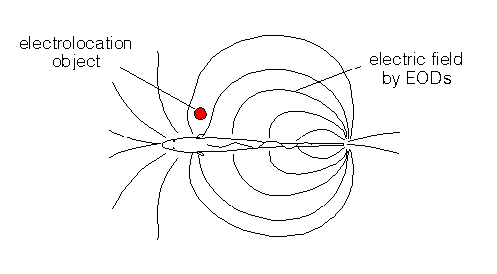Behavioral Neuroscience, JAR lecture on Acetylcholine
Jamming
V.vi. Acetylcholine (ACh)
O
I I
(CH3)3N+-CH2-CH2-O-C-CH3
A. substrates: choline and acetyl CoA
(diet) (Glycolysis and Kreb's)
1. synthetic enzyme: choline acetyltransferase (CAT)
a. cytosolic (most is synaptic)
b. CoA left over
2. degradative enzyme: acetylcholine esterase (AChE)
a. membrane protein
b. catabolites = choline and acetate
i. reuptake of choline
c. turnover = 150ms or 5,000 ACh molecules/s
B. Muscarinic and Nicotinic Receptors (membrane proteins)
1. muscarinic M1 - M5 7tm
a. slow response time (100 - 250 ms)
b. act directly on ion channels
i. open or close K+, Ca++, or Cl- channels
(1) may lead to depolarization
or hyperpolarization
c. and activate 2nd messenger system (via G proteins)
асDAGасPKC
i. M1,3,5 Gp(q)асPLCасPIP2асIP3 & Ca++
ii. M2,4 GiатACатcAMP ат PKA
2. Nicotinic
a. made up of 5 subunits, from these a, b, g, d, e
i. four glycosylated peptide chains a, b, g, d in muscle
ii. neuronal only a & b
b. ACh binds to the a subunit
i. binding causes conformational change
(1) allows cations, not anions, to pass
(2) Ca++ passing stimulates muscular contraction
of trunk, fin, oculomotor, jaw & opercular
musculature
C. Central ACh Distribution in vertebrates: Involved in Learning
1. ACh is produced in the nucleus basalis
a. projections to the cerebral cortex and many parts of the brain
b. these cells degenerate during Alzheimer's disease
2. ACh is in 2 specific populations in the limbic system
a. septum to hippocampus & habenulo-endopeduncular projections
b. short axon striatal cells
D. Autonomic NS
1. all sympathetic and parasympathetic preganglionic neurons
2. parasympathetic postganglionic neurons
E. ACh as a transmitter for motor actions and coordination
1. motor neurons
\ all skeletal neuromuscular junctions
a. Invertebrate motor neurons
b. Vertebrate motoneurons of spinal cord & cranial nerves (I-XII)
i. abducens (VI) innervation of the eye
ii. trigeminal (V) innervation of the operculum
2. Cells in the caudate-putamen nucleus involved in motor coordination
3. PPT (pedunculopontine tegmental nucleus) and LDT (laterodorsal tegmental nucleus)
innervation of substantia nigra
